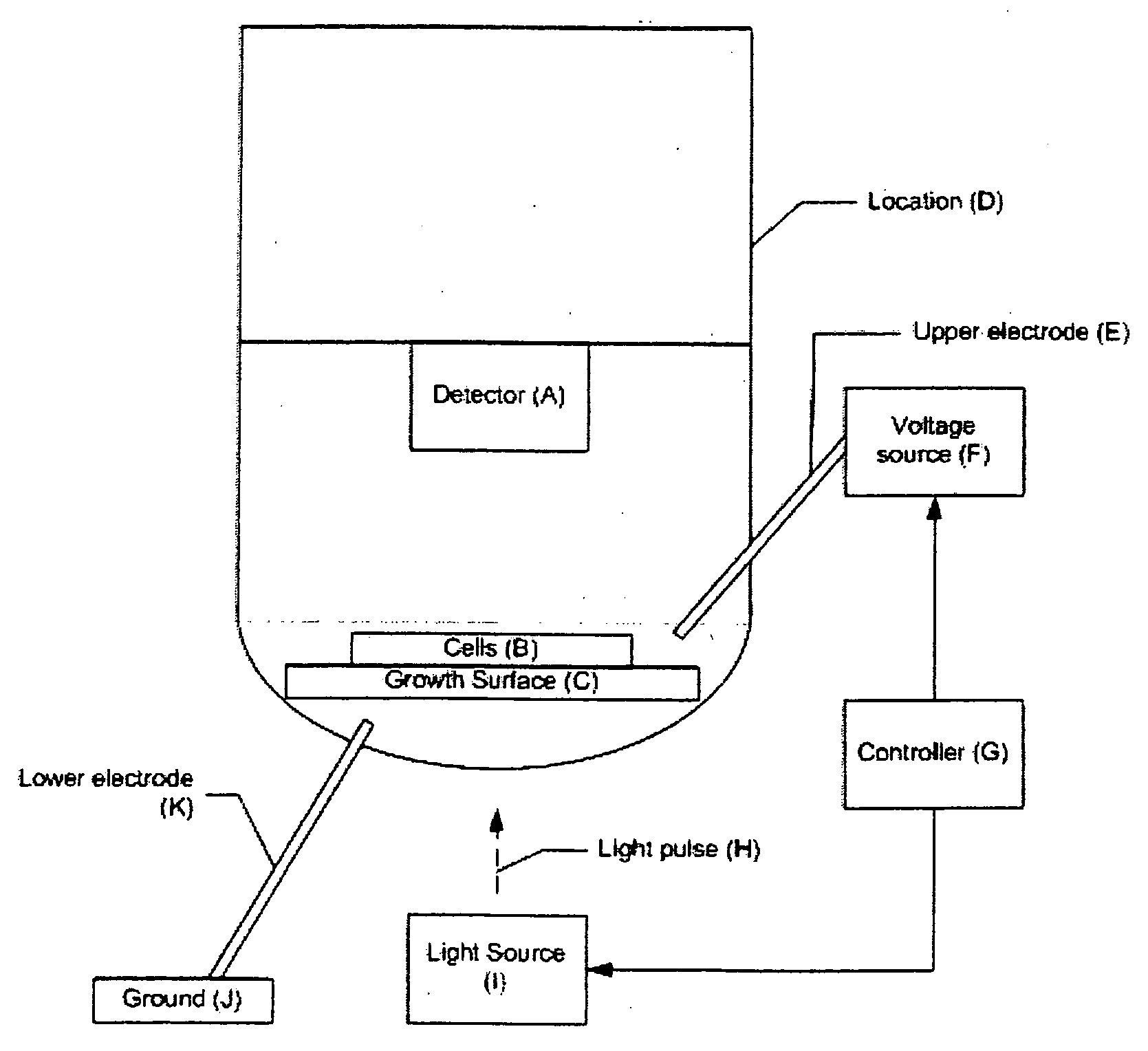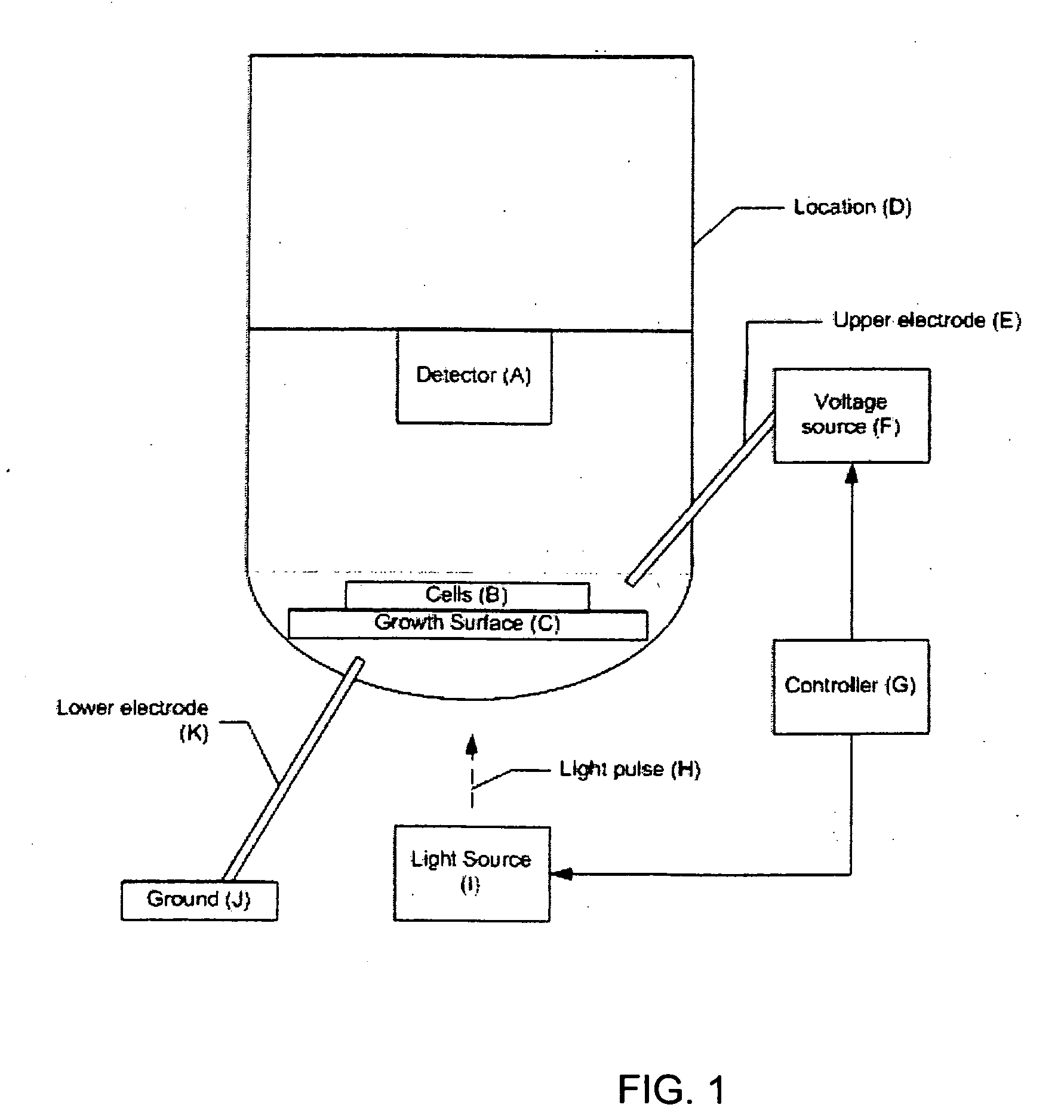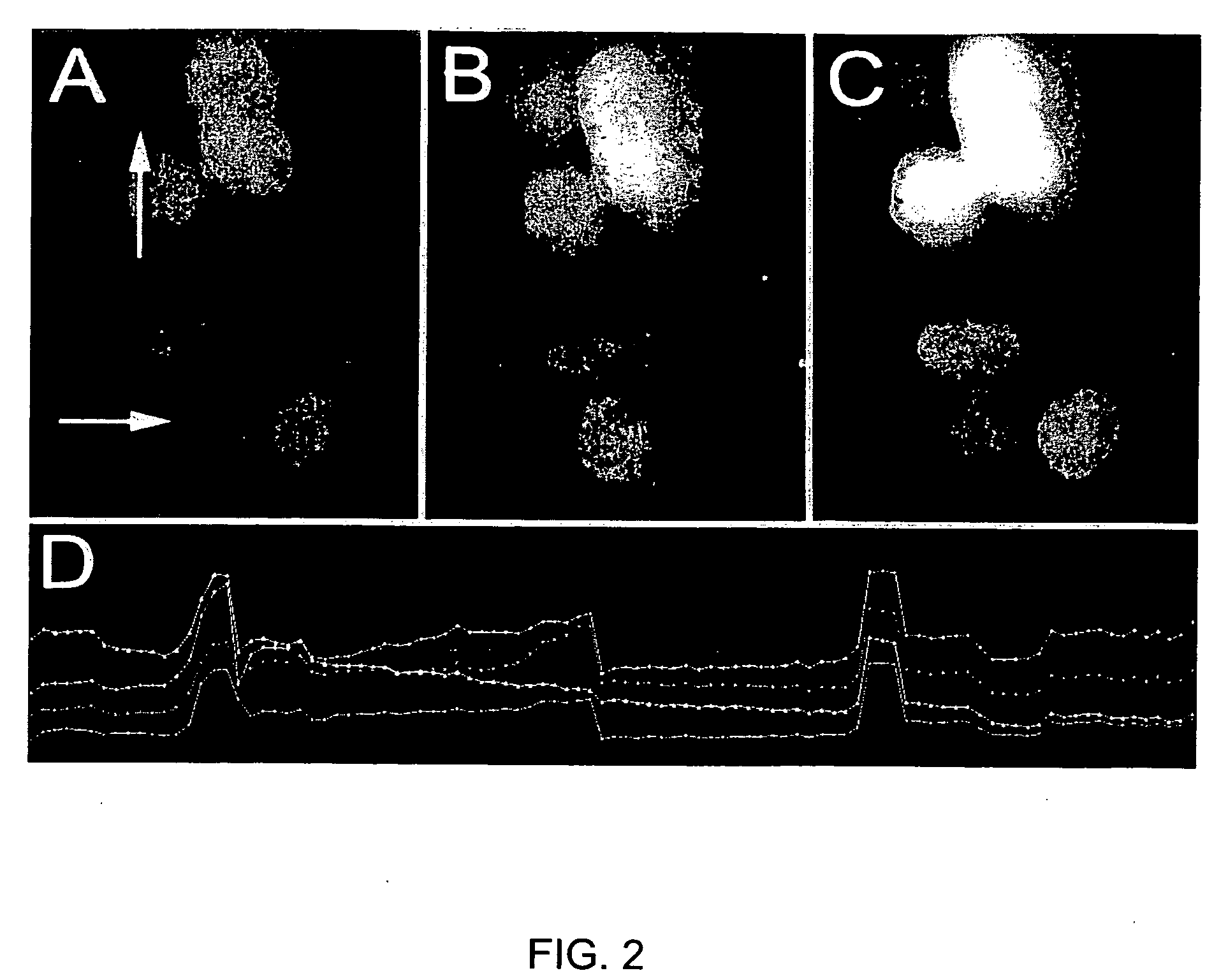High throughput use-dependent assay based on stimulation of cells on a silicon surface
- Summary
- Abstract
- Description
- Claims
- Application Information
AI Technical Summary
Benefits of technology
Problems solved by technology
Method used
Image
Examples
example 1
Assay Apparatus
[0095] The components of a 96-well assay system, according to one embodiment of the invention, are shown in FIGS. 3-9. Although the example system contains 96 wells, the same approach could be applied to a system with a different number of wells, for example, 64, 100, 128, 256, or 512. In the representative embodiment (shown in cross-sectional view from the side in FIGS. 8A and 8B), the system is comprised of three major subassemblies: a bottom plate assembly 100 containing the light sources used for the photoconductive stimulation; an assembly having a middle plate 130 containing the wells, an array of silicon wafers 120, and upper and lower electrodes, and a carrier plate 100; and an upper plate assembly 140 containing the fluorescence excitation light source, dichroic mirror and filter assembly, and the fluorescence imagers. FIG. 6 shows an array of wells 132 disposed in middle plate 130. FIG. 5 shows a wafer assembly layer 120 having an array of individual wafers...
example 2
Photoconductive Stimulation of Human Embryo Kidney Cells
[0103] In FIG. 2, images A-C show Fluo4 calcium imaging of HEK cells which have been transfected with calcium channel subunits before (A) and after (B, C) depolarization with photoconductive stimulation. An increase in the level of calcium within the cells can be observed by the increase in fluorescence. Arrows identify cells that change. Panel (D) is a graph that demonstrates quantitative measurement of calcium indicator signal levels in a subset of cells. Depolarizations can be detected by peaks on the graph.
PUM
 Login to View More
Login to View More Abstract
Description
Claims
Application Information
 Login to View More
Login to View More - R&D
- Intellectual Property
- Life Sciences
- Materials
- Tech Scout
- Unparalleled Data Quality
- Higher Quality Content
- 60% Fewer Hallucinations
Browse by: Latest US Patents, China's latest patents, Technical Efficacy Thesaurus, Application Domain, Technology Topic, Popular Technical Reports.
© 2025 PatSnap. All rights reserved.Legal|Privacy policy|Modern Slavery Act Transparency Statement|Sitemap|About US| Contact US: help@patsnap.com



